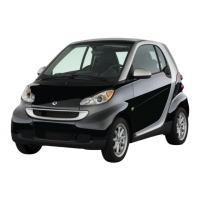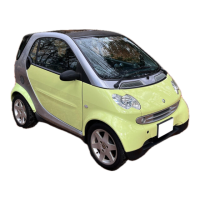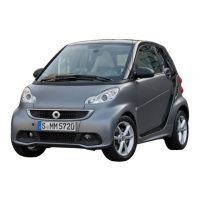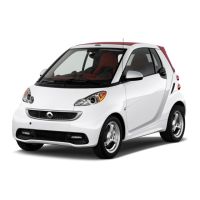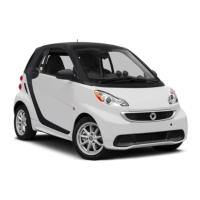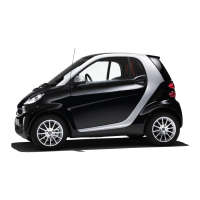Notes on repair operations
Design
85
Introduction of smart fortwo electric drive (3rd Generation) • Model Series 451
Body
Depending on the extent of the damage, sheet
metal damage can be repaired in various ways:
• Remove dents from sheet metal part(s)
• Partially replace sheet metal part(s)
• Completely replace sheet metal part(s)
Only the cutting areas are specified for sectional
repairs (also "replacement part repairs"). This
gives the service operation some leeway when
adjusting the section to the respective damage
profile. Cuts should always be made at the
narrowest point and along the shortest distance.
Sectional repairs on the front longitudinal
member are only permissible in front of the axle
mount. The dull repair weld seams on the front
longitudinal member repair section may not be
ground smooth for strength-related reasons.
Before and after body repairs, the fault memory
must be read out and any faults present must be
documented.
After repairs to the body or body connections
(e.g. suspension), the steering angle sensor (ESP)
must be reparameterized.
Welding
Welding may only be performed on the vehicle
after the high-voltage battery has been deener-
gised.
The high-voltage battery should be protected
from the influence of thermal energy.
Before welding, a voltage monitor can be attached
to the 12 V battery. This protects electronic
systems and components from brief voltage peaks
(overvoltage) caused by the welding equipment.
The 12 V battery does not then have to be discon-
nected.
The decision as to whether a voltage monitor is
used or the 12 V battery is disconnected depends
on the extent of the damage.
Post-repair refinishing
The following measures must be observed before
and during painting work:
• The preparation of paints produces vapors
which combust in an explosion if ignited.
• Good ventilation must be provided before and
during painting work.
• A dry temperature (or object temperature) of
60 °C may not be exceeded.
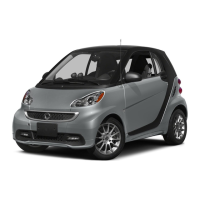
